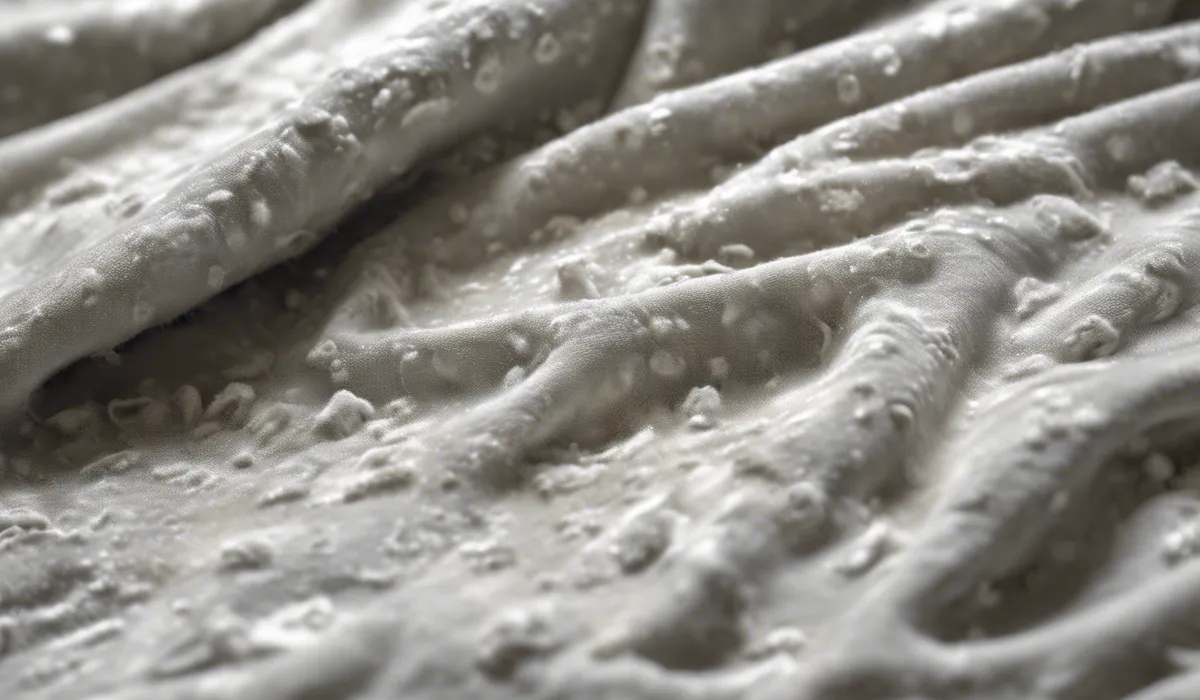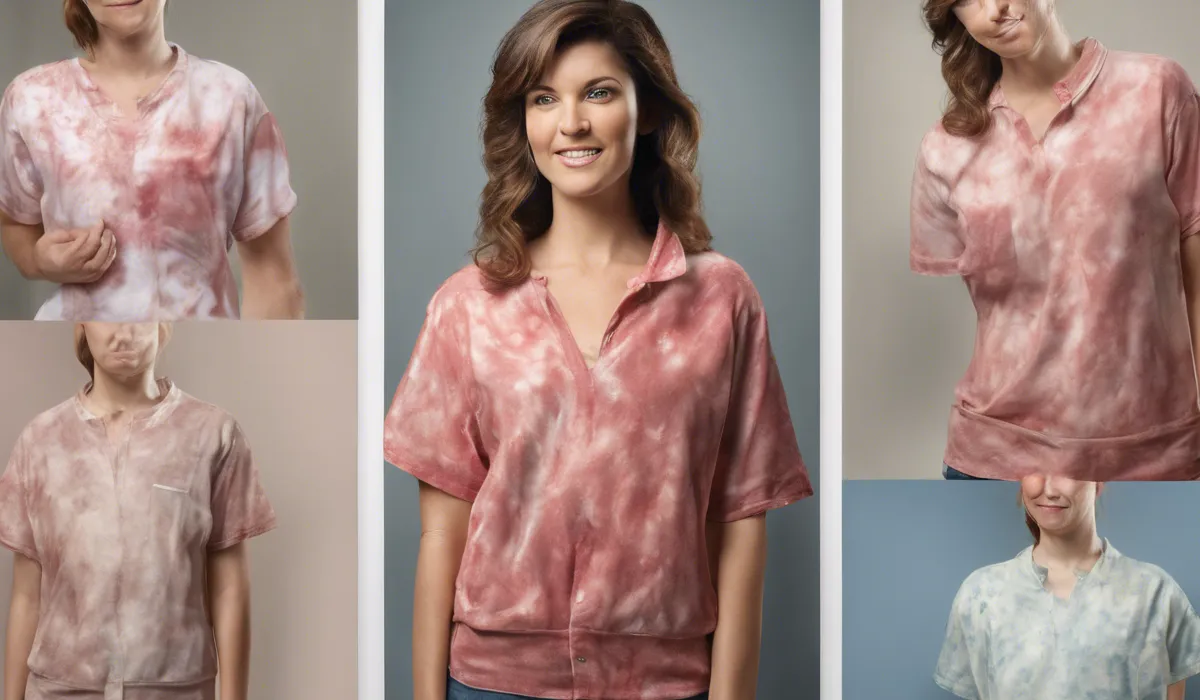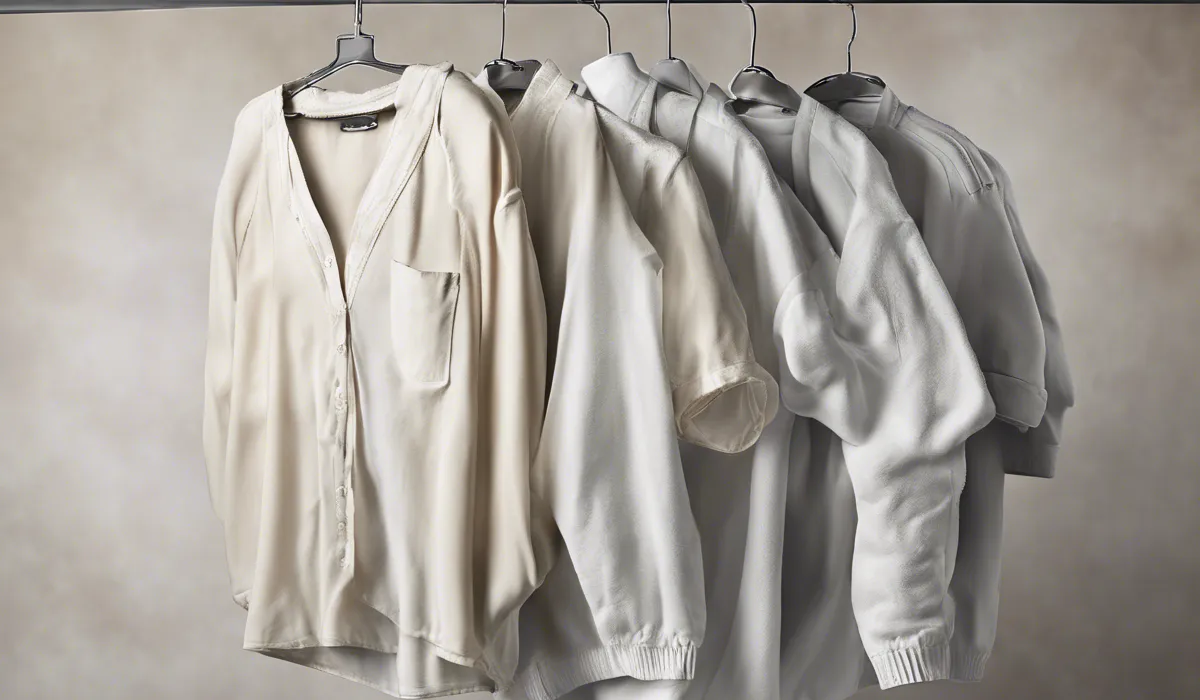To remove mildew stains from clothes, create a mixture of equal parts water and vinegar. Apply directly to the stain, let it sit for 15 minutes, then launder as usual.
For persistent stains, use a paste of baking soda and water before washing. Always air dry to ensure the stain is gone.
Understanding Mildew Stains

Definition and Characteristics of Mildew
Mildew is a type of fungus that thrives in moist, warm areas. It appears as a patch of gray or white that gradually turns black or brown.
This growth can be fluffy or powdery and often gives off a musty smell. Mildew is not only unsightly but can also weaken fibers and damage clothes if left untreated.
Causes of Mildew Stains on Clothes
Mildew stains appear on clothes when they are left damp for too long. This can happen if clothes are not dried properly after washing or if they get wet during storage.
High humidity and warm temperatures create the perfect environment for mildew to grow.
Stains from mildew are usually a sign that the clothes have been exposed to moisture for an extended period.
Types of Fabrics Most Susceptible to Mildew
Natural fibers like cotton and linen are most vulnerable to mildew because they absorb moisture easily.
Synthetic fibers may resist mildew better but are not immune, especially when mixed with natural fibers. The key is moisture control, no matter the fabric type.
Mildew Stain Removal Methods

Pre-treatment Steps
Removing Excess Mildew
Before treating the stain, remove as much mildew as possible. Brush the area gently with a soft-bristled brush to get the mildew off the surface. Do this outside to avoid spreading spores indoors.
Pre-soaking in a Vinegar Solution
Mix equal parts water and vinegar and soak the stained area for 15 minutes. Vinegar is a mild acid that helps break down mildew. After soaking, check the stain to see if it’s lighter.
Home Remedies and Natural Solutions
Using Vinegar and Baking Soda
For persistent stains, make a paste of baking soda and water after the vinegar soak. Apply it to the stain and let it sit before washing. This combination often lifts the mildew out of the fabric.
Lemon Juice and Salt Method
Lemon juice mixed with salt can act as a natural bleach. Apply this mixture to the stain and place the garment in the sun. The sun will help to bleach the stain while the lemon and salt break it down.
Commercial Mildew Stain Removers
Recommended Products
There are many products specifically designed to tackle mildew. Look for those with good reviews and follow the instructions closely.
Usage Instructions Specific to Mildew
When using commercial removers, ensure that you apply them directly to the stain and allow enough time for the product to work before laundering.
Machine Washing Techniques
Appropriate Detergents and Settings
Use a detergent that is effective against mildew and set your washing machine to the hottest water safe for the fabric. Hot water can help kill any remaining mildew spores.
The Importance of Hot Water (if Applicable)
If the garment’s care label allows, hot water is crucial for killing mildew. It also helps to remove the residue left by the mildew and any cleaning agents you have applied.
Preventing Future Mildew Stains

Proper Storage and Handling of Clothes
Ventilation and Moisture Control
Keep your clothes storage areas well-ventilated. Use closet dehumidifiers if necessary, especially in damp climates. This helps to prevent moisture from settling on your clothes.
Tips for Storing Clothes in Damp Environments
In damp environments, avoid storing clothes in basements or other areas prone to moisture. Use silica gel packets or other moisture absorbers to keep the environment around your clothes dry.
Regular Cleaning and Maintenance
Frequency of Washing Clothes
Wash your clothes regularly to prevent mildew. Pay extra attention to clothes that have been exposed to moisture or sweat, as these are more likely to develop mildew.
Using Mold Inhibitors During Laundry Cycles
Add mold inhibitors to your laundry cycles. These products are designed to prevent mold and mildew growth, keeping your clothes fresh and clean.
Lifestyle and Environmental Adjustments
Dehumidifiers and Air Purifiers
Use dehumidifiers and air purifiers in your home to maintain a dry and clean environment. This reduces the overall humidity, making it less likely for mildew to grow on clothes and other surfaces.
Sunlight Exposure for Clothes
Whenever possible, let your clothes dry in sunlight. Sunlight is a natural disinfectant and can help prevent the growth of mildew. Plus, it leaves your clothes with a fresh, natural scent.
FAQs About Removing Mildew Stains from Clothes
What is the initial step to remove mildew stains from clothes?
To start, mix equal parts of water and vinegar, apply it directly to the stain, and let it sit for 15 minutes before laundering.
Can vinegar and water remove all mildew stains from clothes?
While vinegar and water can remove many mildew stains, persistent stains may require a paste of baking soda and water before washing.
How do you apply a baking soda paste to a mildew stain?
Apply the baking soda paste directly to the stain, rub gently, allow it to sit for a short period, and then launder as usual.
Should clothes with mildew stains be air dried or machine dried?
Always air dry clothes with mildew stains after washing to ensure that the stain is completely removed.
What should I do if a mildew stain persists after treatment?
If the stain persists, repeat the treatment with a vinegar and water mixture or a baking soda paste before laundering again.
Final Thoughts
To tackle mildew stains on clothes, a half-and-half solution of water and vinegar is effective; apply it to the stain and wait 15 minutes before washing.
For tougher stains, a baking soda paste may be needed. After treating, always air dry to check that the stain has been fully removed.
Useful Resources
- https://site.extension.uga.edu/textiles/care/stain-removal/remove-stains-from-mildew-mold/
- https://extension.missouri.edu/publications/gh5928
- https://www.cpsc.gov/Recalls/2024/Wet-Forget-USA-Recalls-2-7-Million-Bottles-of-Xtreme-Reach-Outdoor-Mold-Mildew-Stain-Remover-with-Hose-End-Nozzle-Due-to-Risk-of-Skin-and-Eye-Irritation
